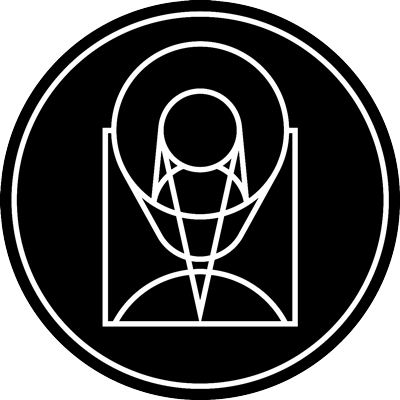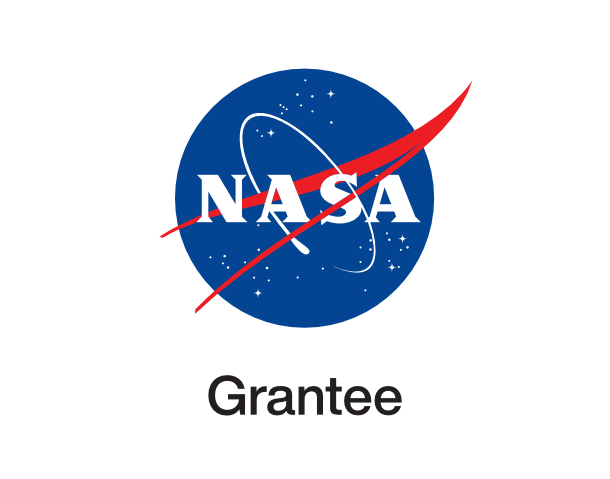Searching for Dark Matter in a Galaxy Cluster

stsci_2007-17b May 15th, 2007
Credit: NASA, ESA, M.J. Jee and H. Ford (Johns Hopkins University)
This rich galaxy cluster, catalogued as Cl 0024+17, is allowing astronomers to probe the distribution of dark matter in space. The blue streaks near the center of the image are the smeared images of very distant galaxies that are not part of the cluster. The distant galaxies appear distorted because their light is being bent and magnified by the powerful gravity of Cl 0024+17, an effect called gravitational lensing. Dark matter cannot be seen because it does not shine or reflect light. Astronomers can only detect its influence by how its gravity affects light. By mapping the distorted light created by gravitational lensing, astronomers can trace how dark matter is distributed in the cluster. While mapping the dark matter, astronomers found a dark-matter ring near the cluster's center. The ring's discovery is among the strongest evidence that dark matter exists. The Hubble observations were taken in November 2004 by the Advanced Camera for Surveys.
Provider: Space Telescope Science Institute
Image Source: https://hubblesite.org/contents/news-releases/2007/news-2007-17
Curator: STScI, Baltimore, MD, USA
Image Use Policy: http://hubblesite.org/copyright/

- ID
- 2007-17b
- Subject Category
- D.5.5.3
- Subject Name
- CL0024+17, ZwCl 0024+1652
- Credits
- NASA, ESA, M.J. Jee and H. Ford (Johns Hopkins University)
- Release Date
- 2007-05-15T00:00:00
- Lightyears
- 5,000,000,000
- Redshift
- 5,000,000,000
- Reference Url
- https://hubblesite.org/contents/news-releases/2007/news-2007-17
- Type
- Observation
- Image Quality
- Good
- Distance Notes
- Distance in lightyears
- Facility
- Hubble, Hubble, Hubble, Hubble, Hubble, Hubble
- Instrument
- ACS/WFC, ACS/WFC, ACS/WFC, ACS/WFC, ACS/WFC, ACS/WFC
- Color Assignment
- Blue, Blue, Green, Green, Red, Red
- Band
- Optical, Optical, Optical, Optical, Optical, Optical
- Bandpass
- B, g, V, r, i, z
- Central Wavelength
- 435, 475, 555, 625, 775, 850
- Start Time
- Integration Time
- Dataset ID
- Notes
- Coordinate Frame
- ICRS
- Equinox
- Reference Value
- 6.64372186306, 17.16221659530
- Reference Dimension
- 3838.00, 3928.00
- Reference Pixel
- 1912.00018941110, 1916.91947786363
- Scale
- -0.00001390258, 0.00001390258
- Rotation
- -86.39139455965
- Coordinate System Projection:
- TAN
- Quality
- Full
- FITS Header
- Notes
- World Coordinate System resolved using PinpointWCS 0.9.2 revision 218+ by the Chandra X-ray Center
- Creator (Curator)
- STScI
- URL
- http://hubblesite.org
- Name
- Space Telescope Science Institute Office of Public Outreach
- outreach@stsci.edu
- Telephone
- 410-338-4444
- Address
- 3700 San Martin Drive
- City
- Baltimore
- State/Province
- MD
- Postal Code
- 21218
- Country
- USA
- Rights
- http://hubblesite.org/copyright/
- Publisher
- STScI
- Publisher ID
- stsci
- Resource ID
- STSCI-H-p0717b-f-3838x3928.tif
- Resource URL
- https://mast.stsci.edu/api/latest/Download/file?uri=mast:OPO/product/STSCI-H-p0717b-f-3838x3928.tif
- Related Resources
- Metadata Date
- 2022-07-06T00:00:00
- Metadata Version
- 1.2
Detailed color mapping information coming soon...















